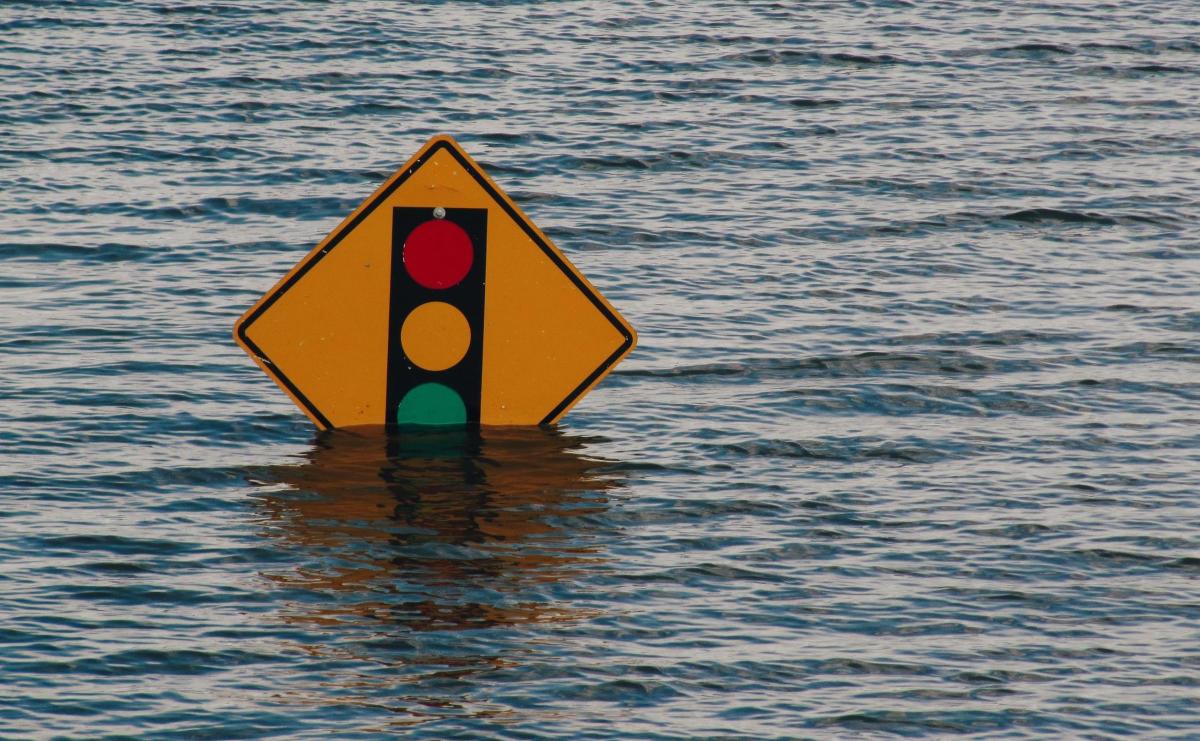1,760 days ago, the first annual edition of Arts House’s Refuge was delivered into the public domain; its final edition concludes this month on 16 May. A consequence of a decade of work by then-Artistic Director at Arts House, Angharad Wynne-Jones, Tipping Point Australia and the London International Festival of Theatre (LIFT), the passage of time is integral to its story.
In the many days since 2016, the disaster scenarios of flood, heatwave, pandemic and displacement – created as programming frames for Refuge – have evolved from science fiction into real-world events. In each year, one can identify artistic elements, preparedness strategies and modes of thinking that simultaneously operate as warning and instruction for our year of 2020 and going forward.
Conceived as an artistic inquiry into disaster-preparedness with first responders from emergency services, thinkers and cultural leaders, Refuge has generated significant bodies of work by core artists Latai Taumoepeau, Jen Rae, Lorna Hannan, Kate Sulan and Harry Lee Shang Lun and a cohort of artistic associates who have prosecuted ideas in an annual program of residencies, a laboratory and public events set, in the first three years, within an emergency exercise simulation.
From the outset, the intention of the program was to be artist-led and First Nations-centred: Taungurung Elder Uncle Larry Walsh, Boon Wurrung Elder N’arweet Carolyn Briggs and Wurundjeri Elder Uncle Dave Wandin have provided constant stewardship. This sits within a curatorial approach that is shared, distributed and avowedly undefined; it is both highly porous and rigorously protected. Various staff at Arts House have cared for the program over the years including producers Tara Prowse and Sarah Rowbottam, general managers Catherine Jones and Sophie Travers, and since Angharad’s departure, artistic directors Josh Wright and now Emily Sexton who describes her approach as ‘not wanting to direct, shape or curate but to hold for a time’.
Refuge is an unusual animal in Australia’s cultural landscape. It is not a season of work, a subscription event or a one-off project. It’s a program planned over six years with a curatorial trajectory that asks a set of questions looking not for answers but a better set of questions. It simultaneously occupies the space of resistance and proposition.
Refuge is prescient; it has told and tells the future. It has an artistic rigour, curatorial openness and administrators who had the courage to demand years-long commitment to inquiry; it represents a notable disruption to the conventions that govern Australian arts programming. For these reasons, Refuge is distinctive in this space both nationally and internationally.
Refuge is prescient; it has told and tells the future.
A defining feature is the commitment to involve people from outside the arts particularly in the management of emergency services. The early discovery that North Melbourne Town Hall (NMTH) was a designated Emergency Relief Centre (ERC) arose out of conversations between Tara Prowse and the City of Melbourne’s Emergency Management Co-ordinator, Christine Drummond. Through Drummond, the Arts House team were also introduced to a range of services including State Emergency Services, Red Cross, Resilient Melbourne and Emergency Management Victoria. Representatives from these agencies became key players in the progress of the program and the development of artistic works primarily through their involvement in the annual Lab program which brought together all stakeholders for brain-dancing sessions in a collaborative, collective format. For many, the Lab is the essence of Refuge.
Steve Cameron is the Manager of Community and Volunteer Development for Victoria’s peak emergency services body, Emergency Management Victoria (EMV). In 2013, he started working with a range of communities and supporting organisations to develop the Community-based Emergency Management (CBEM) Approach – published by EMV in 2016 – as a guide for them to better connect and work together before, during and after emergencies. At the first Lab, he described the CBEM approach to the assembled stakeholders to which Lorna Hannan, leading a chorus of artists, said, ‘Oh we do all our projects like that.’ In time, Steve came to understand that Refuge was an exemplar of the CBEM approach, what arts folk refer to as a ‘structured improvisation’. Reinforcing the value of genuinely developed local processes, he pushed back on any desire to create an ongoing set of protocols.
‘Please do not create a template of how we did it last year (as this creates) structures and templates that won’t work (in new situations): there are too many variables and challenges in any disaster,’cautioned Cameron in the Refuge 2017 Evaluation.
He is currently working with key stakeholders to develop a new model for collaborative, community-led resilience to build upon CBEM and the experience of Refuge along with other research examples at home and abroad.
Volunteering is central to the operation of Victoria’s State Emergency Services (SES). As Controller for the SES Unit in Footscray from 2012-2020, Faye Bendrups brought along to Refuge those members of her team who happened to be rostered on over the weekends that NMTH was transformed into an ERC. It was important they approached the program as necessary training in the same way that they might approach boat rescue or the removal of dangerous debris; they were also drafted into Latai Taumoepeau’s work Human Generator 57. Along with her now-deputy responsibilities at Footscray, Bendrups is President of the SES Volunteers Association, and leads a double life as a well-known performer, theatre director and academic. Unsurprisingly, her ability to read the artistic elements and dramaturgical intentions of Refuge is sophisticated, as is her capacity to integrate learnings at a grassroots level. Refuge shares a philosophical empathy with the way in which Faye managed her unit; she promoted inclusion and attributed equal value to the ‘heroic’ tasks of chainsaw operation and the ‘softer’ tasks of community engagement.
According to Bendrups, ‘Refuge can become the sort of catalyst for translating something that’s already kind of bubbling away there into something very specific, like we have done with all of our safety games and our safety engagement tools and so forth… I think Refuge is way ahead of its time. I think it should be the exemplar for many other communities and groups to use.’
‘I think Refuge is way ahead of its time. I think it should be the exemplar for many other communities and groups to use.’
– Faye Bendrups
In her job at City of Melbourne, Christine Drummond organises a yearly ‘rehearsal’ of emergency management exercises. In the same year Refuge turned NMTH into an emergency relief centre for a pandemic scenario, Drummond ran Exercise Contagion with the relevant emergency services. Not so much a coincidence, as Refuge scenarios had been drafted from Council’s Emergency Management Plan. This blurring of fact and fiction is key to the program’s value.
In 2016, then Emergency Management Commissioner, Craig Lapsley, attended Flood. Kate Sulan’s Nest asked children to drop letters and messages of hope to adults into a letterbox. Drummond remembers saying to him it was the first time she’d heard children laughing in an ERC. Her experience of Refuge has re-calibrated Council’s approach. It’s reinforced the importance of connection with community and privileging what the community needs and wants; it’s refined thinking around each incident having a different needs-profile so not to over-plan, and finally, seriously entertaining the idea of calling on artists, especially in the event of a protracted situation and even integrating them into Council’s new Emergency Management Plan.
For emergency services personnel, at its heart Refuge exposes an urgent need to prepare Australians for emergency situations that have started to cascade into each other, as we’ve experienced these last 18 months. In 2019, Damien Moloney from Red Cross, a strong advocate for Refuge told Radio National, ‘People who are prepared for an emergency recover better from emergency and they respond better to an emergency.’
Preparedness directly impacts on social wellbeing, economic recovery and cultural health. Refuge is testament to the fact that the integration of arts in emergency management protocols, processes and thinking, and a broader experience of artistic practices across the sector can bring profound benefits to the management of emergencies we will certainly face in the future.
Learn more about Refuge at Arts House.





